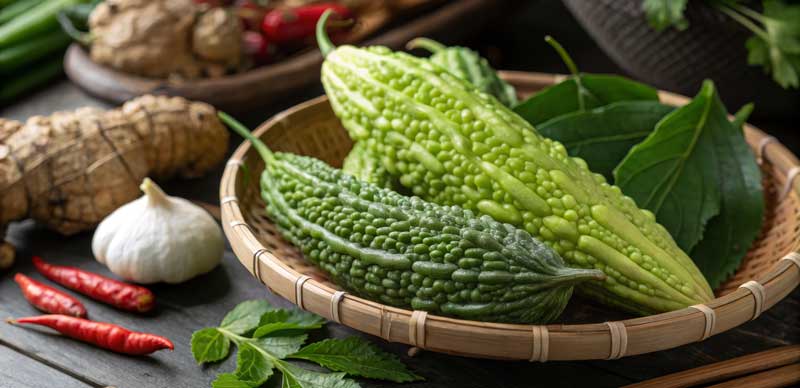
Gourds are fast-growing vines with edible fruits that have been used in cooking for centuries—especially in Asia. While many gardeners are familiar with pumpkins and squash, the gourds featured here are something different. These are not ornamental gourds grown for decoration. They’re versatile, food-producing plants with culinary and cultural importance across India, Southeast Asia, China, and beyond.
What Are Edible Gourds?
Gourds belong to the cucurbit family, which includes cucumbers, melons, and pumpkins. Edible gourds are typically harvested while young and tender, then cooked in stir-fries, curries, soups, or stuffed.
Unlike winter squash or decorative gourds, these Asian types are grown for flavour and texture—not for show. Many are long or bottle-shaped, and some can be eaten when immature or dried and used for practical household items.
In this post, we’ll introduce the main types of edible gourds popular in Asian cuisine that can be grown in Australia. You’ll find a quick overview of each, with links to in-depth growing guides as part of our gourd blog series.
Main Types of Asian Edible Gourds
Bottle Gourd (Lagenaria siceraria)
Also known as: calabash gourd, long melon, lau, dudhi, sorakaya
This is one of the most common edible gourds in Asian gardens. Fruits are pale green with a smooth skin, and shapes can vary—some are long and slender, others more rounded or club-shaped. Harvest when young and soft (25–40 cm long). Used in daals, curries, and steamed dishes. In Australia, sow from October to January in warm regions.
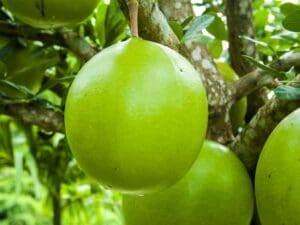
Bitter Melon (Momordica charantia)
Also known as: karela, goya, bitter gourd
Bitter melon has a unique ridged surface and strong flavour. It’s used widely in Chinese, Indian, and Southeast Asian cooking for its medicinal qualities and cooling properties. Grows best in full sun with strong trellis support. Pick fruits around 12–20 cm when they are light green and still immature.
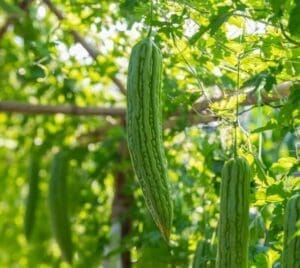
Snake Gourd (Trichosanthes cucumerina)
Also known as: chichinda, padwal, serpent gourd
Snake gourds grow long, curved fruits that can reach 1–1.5 metres in length. They are white-fleshed with a mild flavour when cooked. Best harvested between 40–60 cm when still tender. Requires a strong vertical structure or overhead trellis to allow straight development. Popular in southern Indian and Sri Lankan cuisine.
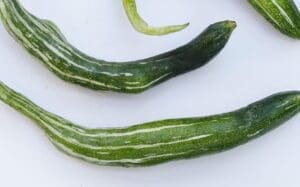
Long Luffa (Luffa aegyptiaca)
Also known as: Chinese okra, angled luffa, ridged gourd, si gua
Ridged and deeply grooved fruits grow up to 60 cm long. When harvested young, they’re edible and spongey, ideal for steaming or stir-frying. If left to mature and dry on the vine, they can be peeled and turned into a natural sponge. Luffa vines grow vigorously in warm, humid conditions and benefit from regular pruning and support.
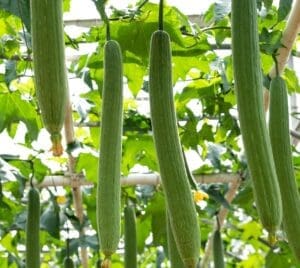
Short Luffa (Luffa acutangula)
Also known as: smooth luffa, silk gourd, dishrag gourd
This variety is rounder and shorter, often harvested at 15–30 cm. Texture is softer, and it’s faster to mature than long luffa. Cooked in soups and curries, or steamed with other vegetables. Grow in rich soil and give vines space to climb for best results.
More information about the varieties of Gourd can be found here.
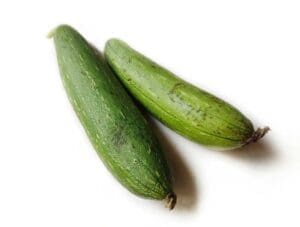
Wax Gourd (Benincasa hispida)
Also known as: winter melon, ash gourd, petha, dong gua
Large, round-to-oblong fruits with a waxy coating that allows for long storage. Grown more like a pumpkin but still part of the gourd group. Popular in soups and medicinal broths. Fruits can reach 30–50 cm in length and over 5 kg in weight. Best suited to large gardens with room to sprawl.
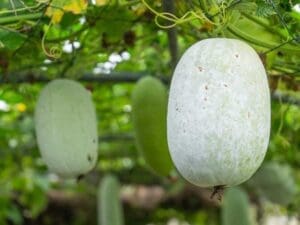
Growing Conditions and Timing
All of these gourds are warm-season crops that thrive in sunny conditions. They need a long growing season—usually 90–120 days—and do best when planted after the last frost. In most Australian regions:
- Temperate and Subtropical: Sow from October to January
- Tropical: Sow during the dry season
- Cool Climates: Start seeds indoors and transplant after frost risk
Use trellises, fences, or overhead arbors to support their climbing habit and improve airflow around leaves and fruit. Soil should be rich in compost, free-draining, and kept evenly moist.
Why Grow Asian Gourds?
These gourds offer more than just food—they bring cultural value, versatility, and productivity to your garden. Unlike Western-style squash or pumpkins, they’re usually eaten immature, have delicate flavours, and work well in hot-climate kitchens. Plus, some varieties like luffa provide both food and a sustainable cleaning product in one plant.
Explore Each Gourd Variety in Detail
This post is part of our ongoing Gourd Growing Series. Click below to read more about how to grow each gourd in your own garden, with full sowing advice, care tips, and culinary uses.
- How to Grow Bottle Gourd
- How to Grow Bitter Melon
- How to Grow Snake Gourd
- How to Grow Luffa (Long & Short)
- How to Grow Wax Gourd
Looking for something practical and flavourful to grow this summer? Asian gourds are a great way to make the most of vertical space, build your cooking garden, and explore new textures and flavours.
🌱 Ready to get started? Browse our range of Gourd Seeds today and enjoy the rewards of growing your own.
